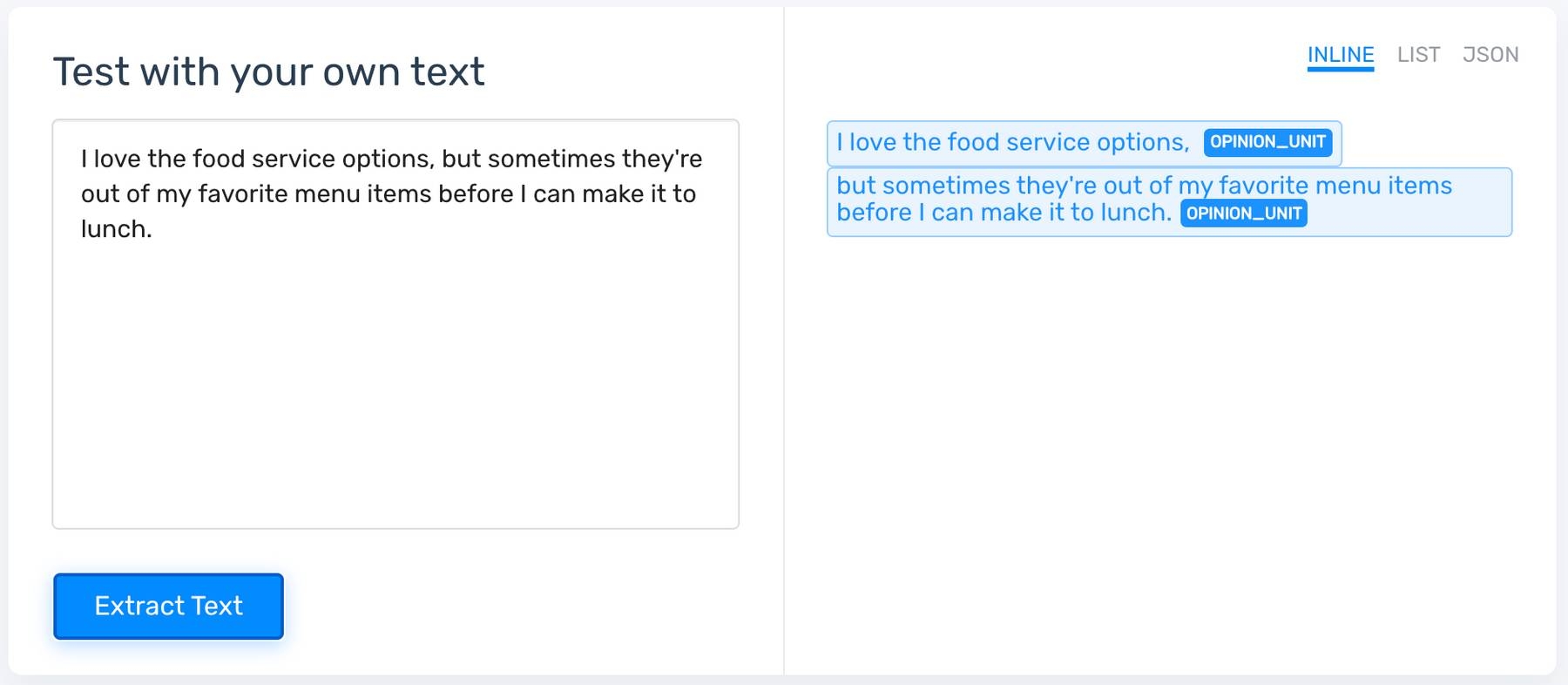Learn What Voice of Employee (VoE) Can Do for Your Business

- What is Voice of Employee (VoE?)?
- The Importance of Voice of Employee
- Voice of Employee Process
- Voice of Employee Tips
In these customer-centric times, companies can forget to open their doors to the problems and pain points of their employees. Most companies already have a VoC (voice of customer) program in practice, but it’s also important that you listen to the voice of your employees, to ensure they’re happy, productive, and engaged.
What is Voice of Employee (VoE)?
Voice of employee (VoE) is the process of gathering opinions, complaints, and suggestions from employees about their experiences and satisfaction with their workplace. The goal of Voice of Employee is to improve individual and overall employee satisfaction.
According to a survey from Achievers, a leading employee engagement platform, 90% of employees say they are more likely to stay at a company that accepts and acts on feedback, while 43% feel that their company is only “okay” at accepting feedback, and 23% feel that their employers are “horrible” at actually acting on it.
The Importance of Voice of Employee
VoC offers several benefits to your employees and your company:
- Improve employee satisfaction and engagement
- Increase employee retention
- Improve processes
- Identify and solve needs
- Improve customer experience (CX)
VoE is similar to voice of customer (VoC) but targets employees rather than customers. VoE aims to improve the employee experience (EX), boost productivity, decrease employee churn, and enrich workplace culture for greater employee inclusion and enhanced communication between employees.
According to recent polling, 63% of employers agree that retaining employees is harder than hiring them, and 1 in 3 expect employees to last only a year.
VoE is important to identify hardships employees may be experiencing – that department heads are often not even aware of – and increase loyalty to their employer by making them feel more listened to and, ultimately, happier with their work.
VoE focuses on creating channels of communication between employees and their managers, which builds engagement and improves processes. Identifying needs, like new training practices, increased support and praise, even something like improved employee break areas, can have big payoffs for employee satisfaction and retention.
Digging into VoE to listen to your employees and institute new avenues of communication will encourage more communication overall, so individual tasks are clearer, employees are more comfortable in their positions and, ultimately, more prepared to serve the customer.
Improved training, streamlined communication, and retaining more experienced employees will be beneficial to your customers, too, of course. When you establish an employee-centric workplace, you’re set up for a customer-centric business model.
Voice of Employee Process
Three steps to put your own VoE program into place
- Collect VoE data: from interviews, surveys, and online
- Analyze your VoE data: using analytics platforms and machine learning tools
- Act on your results: put your data to work
1. Collect VoE data
In-person interviews are a great start to understanding VoE. Sometimes it can be helpful for employees to merely “talk things out,” and if employees are comfortable sharing directly with their superiors or HR, interviews can offer tangible insights, because you can give immediate follow-up questions to fully comprehend the situation.
Presenting surveys, whether anonymous or identified, may uncover more truthful information, however, because the respondent may not feel as “on the spot.” Online survey tools, like SurveyMonkey and Typeform are easy to customize and easy to implement. You can design them for close-ended responses (Yes/No, True/False, “on a scale of 1 to 10) or open-ended responses that allow respondents to answer in their own words for deeper, qualitative feedback.
You can even use web scraping tools to extract data from employee review sites, like Glassdoor, or forums and social media to get unsolicited opinions.
2. Analyze your VoE data
If you’re working with quantitative, pre-structured data from close-ended survey responses, spreadsheet applications, like Excel can easily crunch the numbers for percentages and statistics. And online survey tools offer some built-in analysis techniques.
Complaints, opinions, and feelings of open-ended responses, however, can offer many more insights and add depth to your VoE analysis, but they can be a bit more difficult to analyze. It used to be that you’d have to read through them and annotate them manually for results that were too often less than brilliant and not entirely accurate.
Thankfully, advancements in SaaS text analysis tools have now made it easy to put AI tools to work to automatically analyze your unstructured, open-ended VoC data for much deeper, more nuanced results.
MonkeyLearn is a SaaS text analysis platform with a suite of tools for breaking down VoC data for real, actionable insights that you can use to improve your company’s employee experience.
Dell, for example, used MonkeyLearn’s tools to save hundreds of hours analyzing 10,000+ employee survey comments using aspect-based sentiment analysis.
Open-ended responses were first broken into individual opinions using MonkeyLearn’s opinion unit extractor:

Next, a custom topic analysis model was trained to organize responses into categories: Break Area, Food Service, Gym, Meeting Room, etc.:

Finally, the opinion units were run throughMonkeyLearn’s pre-trained sentiment analysis model to understand the sentiment or “opinion polarity” of each of the opinion units:
The end result is aspect-based sentiment analysis – Dell was able to categorize each opinion unit into a predetermined topic and analyze each one for sentiment, so that each category can be automatically understood for overall Positivity or Negativity, as well asindividual comments.
3. Act On Your Results
You’ve analyzed the data, now it’s time to put the results into practice. Machine learning text analysis tools are fast and easy to use, so you can run your analysis 24/7 and in real time. When you give regular employee surveys and analyze them for quarterly, monthly results, even daily results, you can have a constant window into voice of employee. This is called an employee feedback loop.
Once your analysis is complete, it’s important to “close the loop” and let your employees know that you’ve instituted the changes they recommended and feedback is always welcome.
Voice of Employee Tips
To set yourself up for the ideal VoE analysis and get the most from the voice of your customers follow these tips:
- Introduce machine learning tools: SaaS machine learning tools can be easy to set up and you can train them to the needs and criteria of your business, usually in just a few steps. They take the pain and indecision out of manual analysis, and they can be used to improve the employee experience on a regular basis.
- Get valid data: Perform regular employee surveys, and ensure that you give employees the freedom to voice their own opinions by asking open questions instead of leading or close-ended questions. You’ll also need to create a culture of trust and transparency, so employees feel comfortable leaving their honest feedback without having to worry about any repercussions.
- Get leaders involved and incentivize employees to respond: If department heads and managers aren’t participating, why would lower level employees? You need to show your employees that everyone is involved from the CEO on down.
- Follow up and close the employee feedback loop: Put your VoE analysis results into practice and show your employees what it can do to improve the workplace. When your employees are happy, they’ll work harder, be less likely to search for new jobs, and, ultimately, increase your bottom line.
The Wrap Up
Voice of employee analysis can be a huge benefit to any business. In these customer-centric times, companies far too often focus only on the customer, but with a proper voice of employee process in place, you can build up your employees, which will ultimately improve the customer experience.
When it comes to VoE, open-ended, qualitative data provides the best insights. And, while they may be a bit more difficult to analyze, text analysis tools are a huge help to get the most from your data, 24/7 and in real time.
Take a look at all of the powerful text analysis tools MonkeyLearn has to offer and request a demo to see how MonkeyLearn can help you set up your voice of employee program.

Tobias Geisler Mesevage
March 12th, 2021






